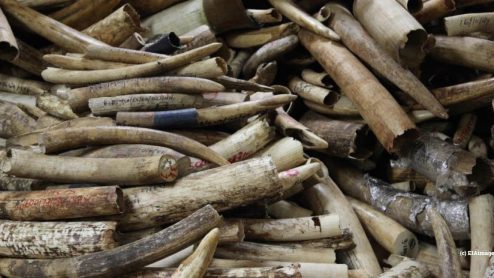EIA at 40 – raising tiger conservation higher up the political agenda in India
In the countdown to EIA’s 40th anniversary later this year, we are featuring previous editions of our newsletter, highlighting our work exposing environmental crime and abuse.
 Today, we share an edition from 1997 detailing our campaign to bolster action on wildlife conservation in India. Our report The Political Wilderness – India’ s Tiger Crisis, released the year before, revealed that at least one tiger was being poached in India ever day.
Today, we share an edition from 1997 detailing our campaign to bolster action on wildlife conservation in India. Our report The Political Wilderness – India’ s Tiger Crisis, released the year before, revealed that at least one tiger was being poached in India ever day.
At the time, poachers were regularly being given permission to operate within protected areas in violation of Indian law; to make matters worse, the country’s highest wildlife advisory body, India’s National Board of Wildlife, had not met for nine years.
Amid massive global public concern and press interest, we launched our Indian Tiger Campaign. The launch was covered all over the world, with television stories on the BBC, CNN and India’s Zee TV.
We took the campaign across India and held meetings with politicians, including the new Minister of Environment and Forests. To help keep the pressure on, we also presented our findings to the UK Parliament and the European Parliament.
On 13 March 1997, we held a press conference in New Delhi as a follow-up to the campaign launch. The event coincided with the Indian Prime Minister reconvening the National Board of Wildlife and promising to hold a second meeting a month after. This was one of our initial recommendations and we were pleased to see many of our other recommendations adopted too – our campaign had hit its target.
Tiger and Wildlife Crime Campaign Leader Debbie Banks writes: “In 1996, when EIA launched its Tiger Campaign, India was, and still is, the world’s stronghold for the remaining wild tiger population, but politically it was on a very different trajectory.
“At that time there wasn’t the political will at the highest levels to save the tiger, with one tiger a day being lost from the population, and tiger experts were concerned that the Indian stronghold would be lost.
“Following consultations with non-government and government conservationists in India, it was clear a shake-up was needed. Enter EIA, fulfilling our role as catalysts for change with a robust, evidence-based, relentless public campaign to embarrass the government of the time. We might not have been popular, but the campaign had impact, reigniting the political will to listen to India’s own experts, committed officials and politicians, scientists, NGOs and citizens.
“Today it’s a different story. While things are not perfect, wild tigers are recovering in parts of India with an estimated population of 3,682, about two-thirds of the world’s wild population.”



